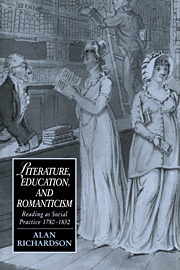3 - Children's literature and the work of culture
Published online by Cambridge University Press: 08 February 2010
Summary
The beginning of the children's book industry in England is conventionally dated from the publication of John Newbery's A Little Pretty Pocket-Book in 1744. Books had, of course, been produced for children well before this period – courtesy books, children's bibles, hornbooks and primers, religious works, and fable collections. Nor was Newbery alone in perceiving, around the middle of the eighteenth century, the potential for a lucrative new market among the growing number of middle-class parents anxious to provide their offspring with a modern education and competitive literacy skills. Children had become, as J. H. Plumb writes, “luxury objects upon which their mothers and fathers were willing to spend larger and larger sums of money,” while initiating them indirectly, through a growing proliferation of children's books, toys, games, and clothing, into their eventual role as consumers in a commercial society. More directly, children's books were required for use in the “domestic” instruction of children (recommended by Locke and his followers) and as supplemental reading for children in schools. Though Locke somewhat distrusted the printed word as a didactic medium, the children's book became a principal vehicle through which his educational theories were disseminated, and Lockean pedagogy was textualized by a host of writers providing instructive, entertaining books for parents eager to increase their children's stock of cultural capital. Thomas Boreman and Mary Cooper were notable among the publishers successfully working this new field.
- Type
- Chapter
- Information
- Literature, Education, and RomanticismReading as Social Practice, 1780–1832, pp. 109 - 166Publisher: Cambridge University PressPrint publication year: 1994



